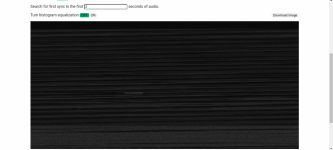Spartanman
Member
- Joined
- Feb 20, 2023
- Messages
- 47
powershell -NoExit -Command Invoke-WebRequest http://celestrak.org/NORAD/elements/weather.txt -OutFile $env:userprofile\AppData\Roaming\WXtoImg\weather.txtVery nice. Given my poor experiences with homebrew antennas, I am truly impressed!V-dipole
Hmmm, have not seen any response from the OP as to what antenna he is using. So, thought I would pass along a picture of the two antennas I mentioned.Very nice. Given my poor experiences with homebrew antennas, I am truly impressed!
I start seeing drops at around 18°Also, a question for PDXh0b0. How well does your antenna handle non-directly overhead signals from the NOAA birds?
i.e. Any "drop-outs" if the bird is only, say, 26 degrees above the horizon as opposed to 90 degrees/directly overhead?
Thanks,
John


open-weather apt — satellite image decoder
open-weather apt is an accessible browser based decoder for National Oceanic and Atmospheric Administration (NOAA) satellite images.apt.open-weather.community

Hi, i use the default anthena of the sdr...
Im thinking on doing one my own. Any recomendation?
And what are the options?If you mean the antenna that came with an RTL-SDR, you should have immediately thrown that antenna away and kept the SDR. I am serious.
It is a small simple whip not designed for the frequencies that you are interest in. For just any receive purposes, there are much better choices.
Is it the Rabbit ears antenna? Inside or outside?And what are the options?

